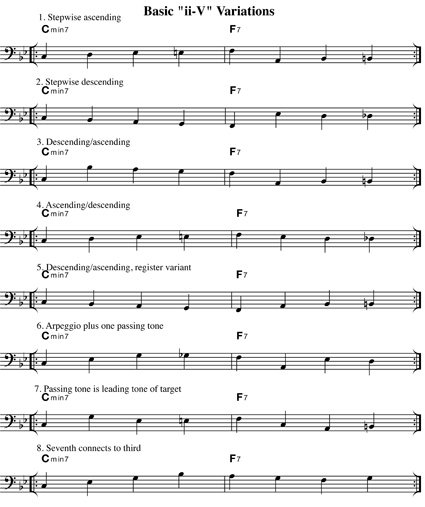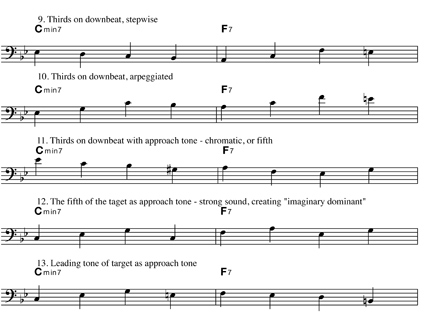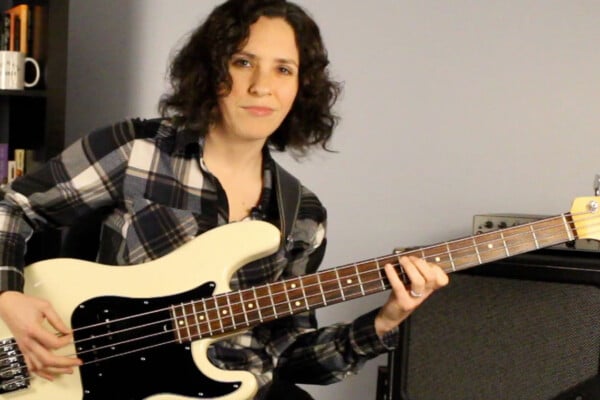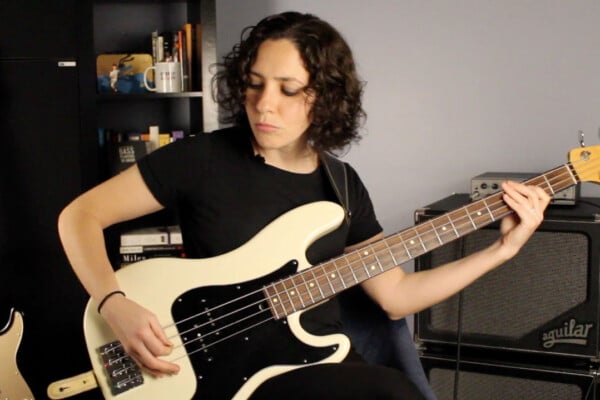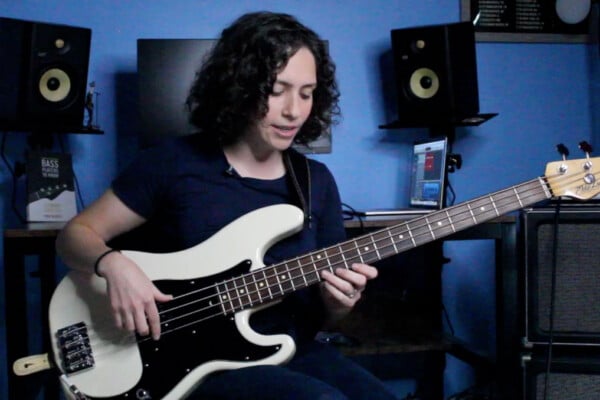Lesson: Basic Line Construction Types
After doing last week’s column, I’ve been thinking more about approaches to creating lines connecting ii and V chords.
I’d like to revisit the subject and delve into some basic line construction types. Each particular technique constitutes parts that become interchangeable and apply to a wide range of bass line situations.
Throughout these exercises we’ll be going back and forth from i to V to ii to V and so on.
In the first example we have stepwise ascending lines, going from one chord to the next, then back to the first chord.
Notice that we’re able to go up the chordal scale only so far, but we run out of notes and need to insert a chromatic to make it come out on the downbeat.
This is common practice and totally acceptable, and familiar to the ear – we’ve heard these bass line structures thousands of times – even though they contain non-harmonic tones, that is, notes not in the chords or “chordal scales.” These passing tones are melodic devices; bass lines can be and should be melodic! Lines can be foundational and melodic at the same time.
In the second example, the line is stepwise, descending. Notice that no chromatics are necessary – there are enough tones in the chordal scale between the roots when the root motion is descending.
The third, fourth and fifth example combine the 2 approaches, hinting at the wide variety of options that emerge just from those 2 ideas. Here they are, 2x each:
In the sixth and seventh examples, were using an arpeggio as the melodic component, finishing the bar with a chromatic approach:
In the eighth example, we’ve connected the seventh of the ii to the third of the V, then used an “imaginary dominant” to get back to the ii…
We’re going to play examples nine through 13 without repeats in order to explore the possibilities suggested by making connections to chord tones other than the root.
In the ninth and tenth examples, we’re beginning each bar on the third of the chord, moving stepwise. In the eleventh example, we combine this with approach tones to the target on one of the next bar.
We’ve found that notes a fourth or fifth away make strong lead-in notes, sounding like imaginary dominant chords and creating a definitive sense of landing on the target. Stepwise lead-ins work as well, with chromatics from below sounding like leading tones from an imaginary dominant, and chromatics from above sounding like tritone substitutions of imaginary dominants.
Although all of these permutations have theoretical underpinnings, the best indicator for any of them is how they sound… but we are not likely to make these choices if we haven’t experienced the sound of them, so it’s a good idea to devote some thought and practice to these various options.
